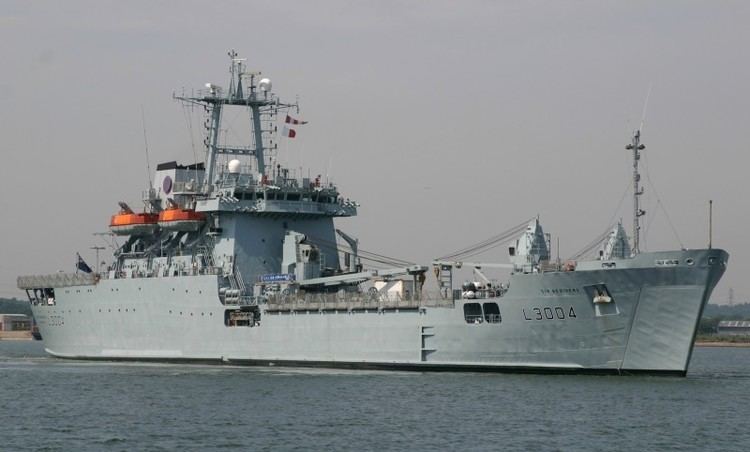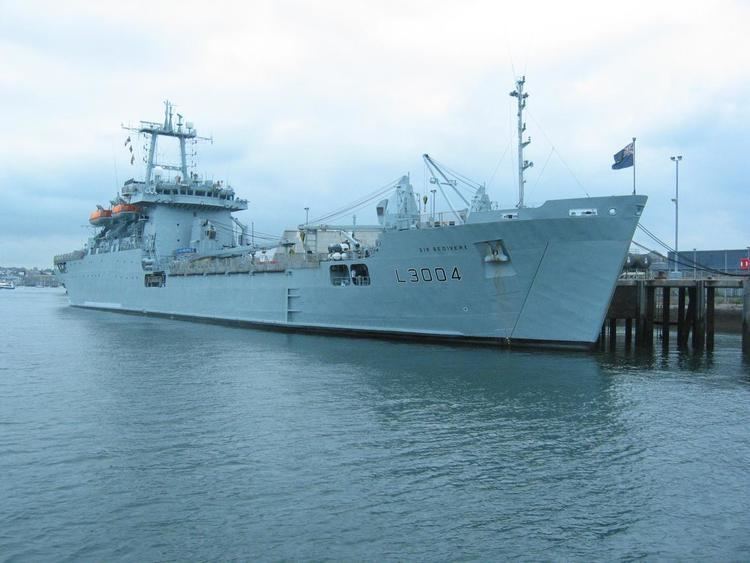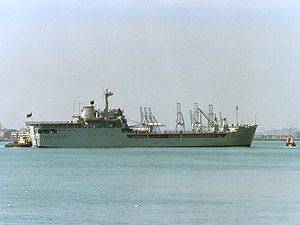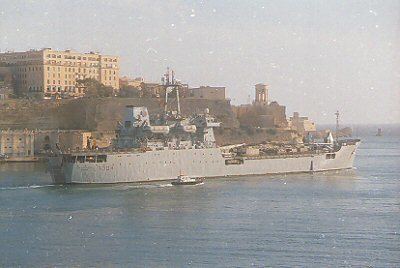Builder Hawthorn Leslie Commissioned 18 May 1967 Construction started October 1966 Length 137 m | Namesake Bedivere Laid down October 1966 Decommissioned 18 February 2008 Launched 20 July 1966 | |
 | ||
RFA Sir Bedivere (L3004) was a Landing Ship Logistic of the Round Table class. She saw service in the Falklands War, the Persian Gulf and Sierra Leone. In 2009, she was commissioned into the Brazilian Navy, and renamed NDCC Almirante Saboia (G-25)

History

The ship was originally built for army service, and was taken over by the Royal Fleet Auxiliary in 1970. She was commissioned in 1967 and saw extensive service in many of Britain's naval operations since. Her home port was Marchwood, Hampshire, which is a major military port.

Sir Bedivere first saw combat in the Falklands War of 1982, when along with all of the Royal Navy's other amphibious ships, she was sent to recapture the Falkland Islands from an Argentine occupation force. At the start of the war, the ship was at Vancouver, British Columbia, Canada, but started back to Marchwood immediately. After loading at Marchwood, she left for Ascension Island. The ship suffered slight damage on 24 May whilst lying in San Carlos Water, when an Argentine Skyhawk dropped a bomb that glanced off the ship.

On 16 November 1982, she returned from the Falklands with the bodies of 64 members of the British Forces (52 soldiers, 11 Royal Marines, and a Chinese laundryman) whose families had wanted their remains returned.
The ship deployed to the Persian Gulf in 1991 in support of Operation Granby.

In 1994, the ship was modernised in a service life extension programme to give it an extra 15 years. The ship was lengthened by 12 metres, had its superstructure altered to a more modern design, the engines were replaced, and the ship's bow thrusters were changed for more powerful models.
After returning to service in 1998, the ship was sent to Sierra Leone in 2000 when the U.K. intervened there. The ship operated as the command vessel for British and American mine countermeasures ships during Operation Telic in 2003. Sir Bedivere left the U.K. in September 2002 for the Mediterranean and operation Argonaut in 2002. She was then diverted to the Persian Gulf accompanied by four British minesweepers. After minesweeping operations were complete, the vessel operated as a troop support ship for the Royal Marines. The ship returned to the U.K. on 29 May 2003, carrying the boats and men of 539 Assault Squadron Royal Marines. In 2006, Sir Bedivere returned from Sierra Leone and its part in Operation Vela.
Although originally intended to be used until 2011, Sir Bedivere was decommissioned on 18 February 2008. In December 2008, Sir Bedivere was sold to Brazil, joining her sister ship Sir Galahad. Sir Bedivere was handed over to the Brazilian Navy on 21 May 2009, after a major refit by A&P Group at the Company's ship repair facility in Falmouth, Cornwall. She was commissioned into service with the Brazilian Navy, and renamed NDCC Almirante Saboia (G-25), after a late senior naval officer. Admiral Saboia's widow and other members of the family were present at the handover ceremony.
